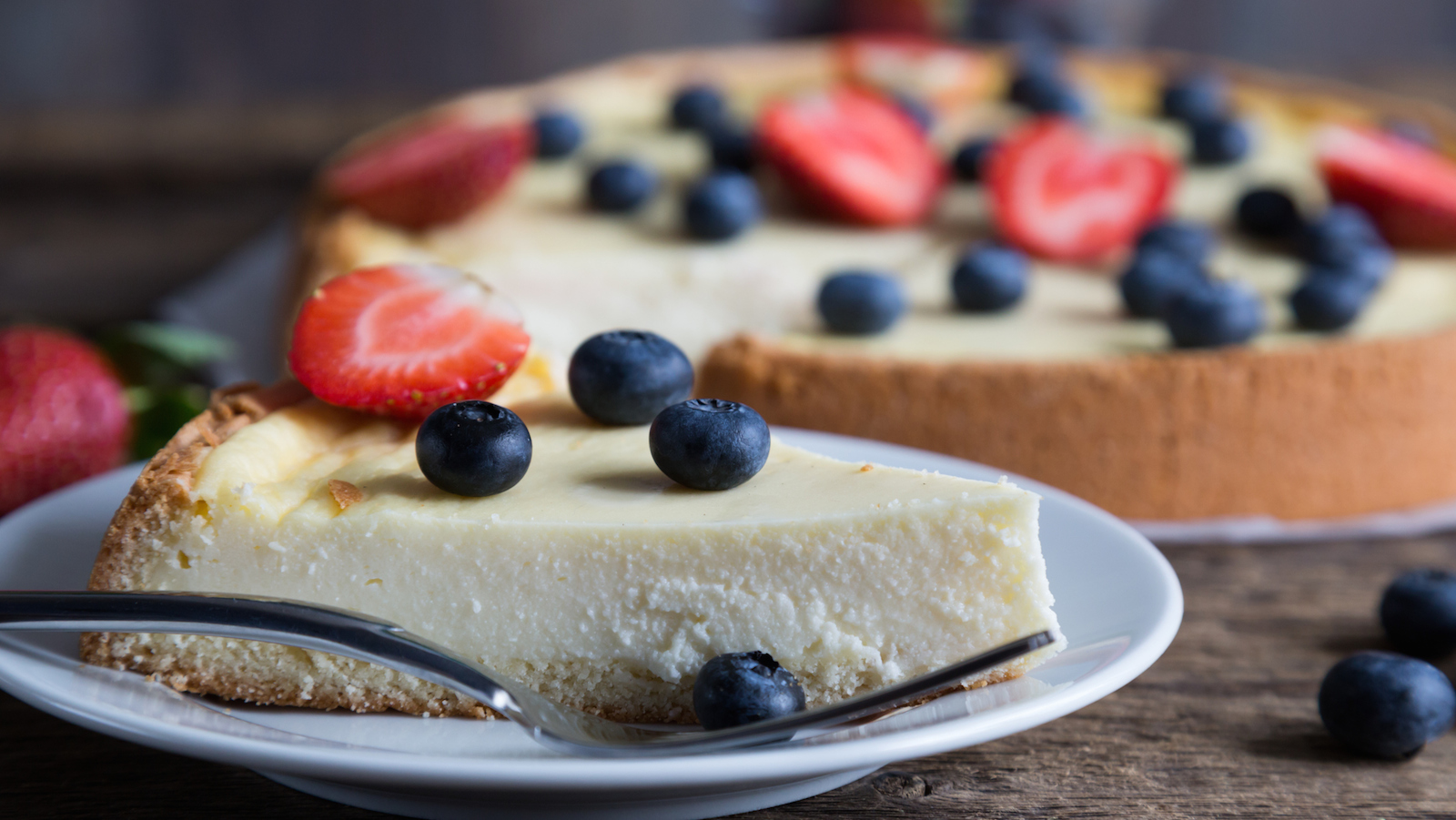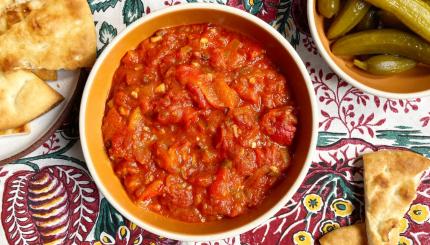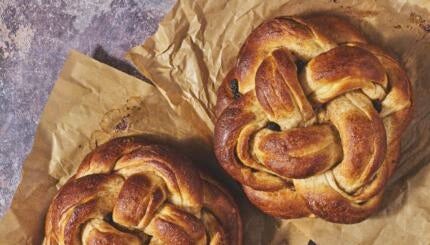Have you ever wondered why Shavuot, the holiday that commemorates the giving of the Torah, is celebrated with cheesecake? The video below explains a few reasons why Shavuot is a holiday for eating dairy, but it makes me wonder: with so many delicious dairy options to choose from–cheese boards, ice cream, grilled cheese, and cheese fondu–what makes cheesecake the food of choice on Shavuot?
Maybe it’s because it’s sweet, resembling the milk and honey of the Promised Land. (Early cheesecake recipes, in fact, were made with milk and honey, in Greece, and fed to the Olympian athletes.)
Or perhaps it’s popularity is due to the invention of New York Cheesecake. In the 1930s, Arnold Reuben, a German-Jewish restaurateur, became known not only for inventing the reuben sandwich, but also for for his (genius!) decision to use cream cheese instead of milk curd in cheesecake for the first time. It was all the rage. It could follow that cheesecake immediately became a popular holiday treat in New York–especially on Shavuot, the holiday for dairy foods.
As my search for the cheesecake connection continued, I stumbled upon an article by Rabbi Ismar Schorsch, which explores why Shavuot has fewer rituals than all other Jewish holidays. He explains:
The Nosher celebrates the traditions and recipes that have brought Jews together for centuries. Donate today to keep The Nosher's stories and recipes accessible to all.
“Shavuot is ritually bereft…There is nothing comparable to the seder or Sukkah for Shavuot, no absorbing home ritual that might unite family and friends in preparation and observance.”
Oddly enough, Shavuot’s lack of celebratory rituals– like candles and latkes, Seders and songs–might also explain the cheesecake question. Clearly, this text-centered holiday needed something fun and fancy, deliciously rich with dairy. Cheesecake, with it’s crust, waterbath, cooling and setting, and might just be the “absorbing home ritual” that Schorsch was looking for.
If all this cheesecake speculation is making you hungry, check out our roundup of 31 Drool-Worthy Cheesecake Recipes for Shavuot.
seder
Pronounced: SAY-der, Origin: Hebrew, literally "order"; usually used to describe the ceremonial meal and telling of the Passover story on the first two nights of Passover. (In Israel, Jews have a seder only on the first night of Passover.)
Shavuot
Pronounced: shah-voo-OTE (oo as in boot), also shah-VOO-us, Origin: Hebrew, the holiday celebrating the giving of the Torah at Mount Sinai, falls in the Hebrew month Sivan, which usually coincides with May or June.



